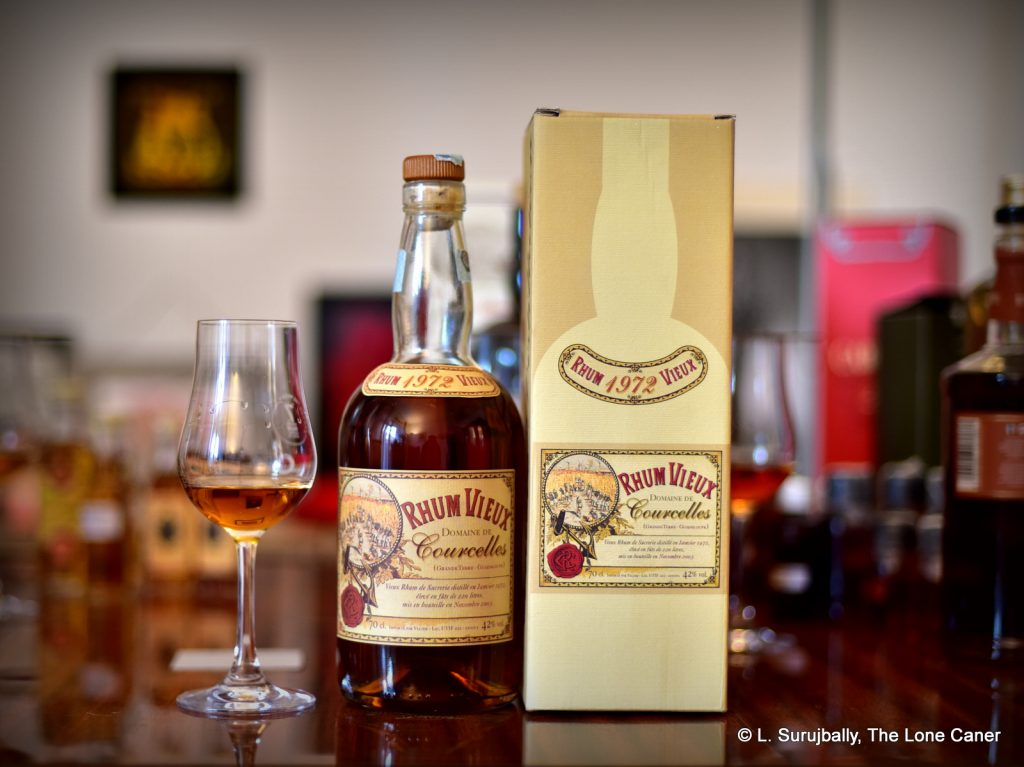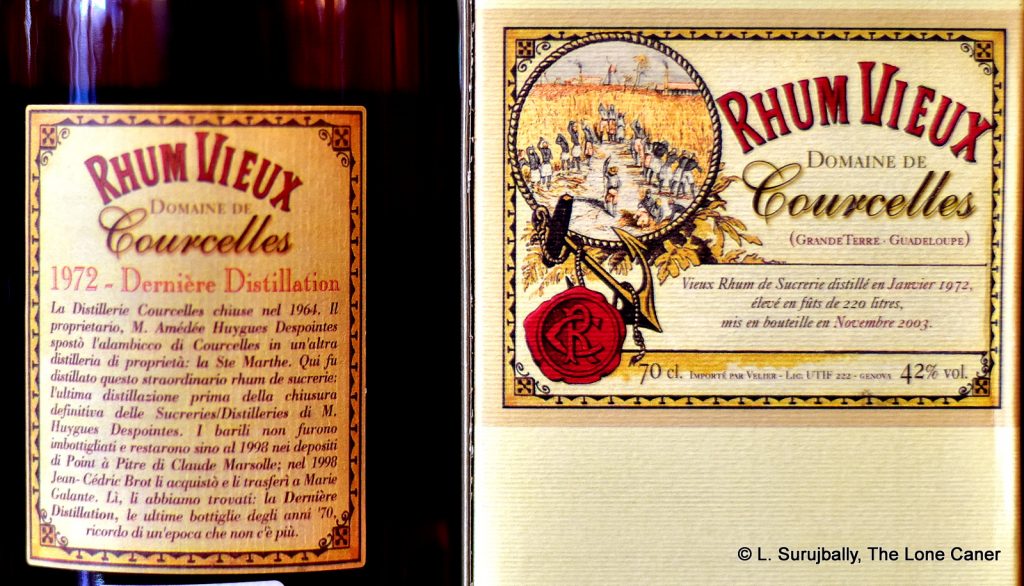
These days, anyone finding a rum three decades old had better hold on to it, because they’re getting rarer all the time. As prices for the 1970s and 1980s rums climb past the fourth digit, locating one can be an equally fortunate and frustrating exercise…depending on how it turns out. As to why Velier chose to issue two rums of the same distillation and aging dates, at two different strengths, well, we know he has done this before, most famously with the entire Caroni line and some of the pre-Age Demerara rums.
Of course, it’s possible that Velier in this instance worked on the principle of taking a the entire outturn and bottling some at cask strength and the remainder at a more quaffable proof appealing to a broader audience. That’s reasonable, I guess (L’Esprit does the same) – yet although the 54% Courcelles 1972 and this 42% version share the same years, there’s a difference in that the 54% was laid to rest in steel vats for nearly two additional years, and both are referred to as the dernière distillation which suggests that a bunch of barrels were involved, each with its own peculiarities.
And those peculiarities are important because they make this softer rhum individual on its own merits and different from its brawnier frere. Take the nose for example: it’s lovely and sweet, light without actually being delicate. It presents bags of light fruit – pears, ripe apples, watermelons, cherries – that go on forever, to which are added soft red-wine notes, honey, thyme and a drizzle of hot caramel on vanilla ice cream. In a way it reminds me a lot of the Savanna 15 Year Old Porto Finish from Reunion (haven’t written about this yet), but somewhat deeper even so, because the scents grow richer over time in spite of its relatively low proof point and their overall mildness.
Tasting a rum like this is a mixed experience – one appreciates the subtlety, but strains to pick apart the notes. That said, it’s quite good, with lovely clear and clean notes of light fruitiness – pears again, watermelon again, some grapes, raisins and ripe mangoes, set off by softer nuances that speak of nougat, white chocolate, a flirt of coffee, rosemary, caramel, vanilla, thyme and some florals. It also has a background of honey that I quite enjoy with a profile like this because it strengthens the whole in a quiet kind of way, provides a bed for the rest of the flavours to emerge onto and do their thing. About the weakest point of the whole experience may be how it ends – the finish is short and faint, a zephyr following from a stiff breeze, with just some barely discernible floral and fruity hints and a bit of orange zest and tart yoghurt, and then it’s all over.

After writing up my notes, I keep coming back to how differently it presents when rated against the 54% version – it’s like they are different branches from the tree, growing in different directions while still conforming to underlying and consistent standards (many of the tasting components, for example, are quite similar). The 42% iteration, I have to somewhat reluctantly note, is less when placed next to its masterful stronger sibling. On its own, with nothing else to compare it to, it’s quietly, subtly brilliant and will not disappoint the casual drinker. But side by side, its potential clarion call is muted and dialled down, it is deferential and says much less…and when it does, it whispers.
(#528)(86/100)
Other notes
- The Courcelles distillery in Grande Terre (one of the two “wings” of Guadeloupe island) was established in the 1930s and closed way back in 1964 when the then owner, M. Despointes, transferred the inventory and equipment to another distillery, that of Ste Marthe. They continued using Courcelles’s pot still and distilled this rum in 1972. This is probably the last year any Courcelles distillate was made – I’ve never been able to find one produced more recently.
- Distilled in 1972 and set to age in 220 liter barrels until 2003. Outturn is unknown
- The profile does not suggest an agricole, and since Guadeloupe is not AOC compliant, it probably derives from molasses. The taste certainly suggests it.
- About that strength differential – in my essay about the Age of the Demeraras, I remarked that the first three releases of Velier Demeraras were all issued at standard proofs because Luca was nervous about moving too fast with releasing >50% cask strength rums. I suspect that he had similar feelings about the 42% version of the Courcelles, which was why it was bottled first – two years later, just when he was putting out the full proof Skeldons in 2005, he went full bore with the rest of the Courcelles stock and never looked back.